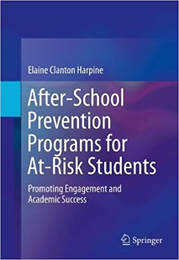Group-centered prevention uses workstations, not one-on-one tutoring or classroom instruction. Workstations allow you to teach in small groups (no more than 3 students at a workstation) and to insert individualized one-on-one instruction when a a particular student needs it. The child then goes back to the group structure at the next workstation. The child does not stay in a one-on-one tutoring format.
Workstations also maintain the therapeutic nature of group process—working together in a supportive, accepting group. If a group is structured correctly, it can be a very powerful teaching and counseling tool.
In a group-centered program, students move independently, instead of moving as a group from station to station. Often, when teachers use learning centers or small groups, they have students move as a group. They will ring a bell or announce that it is time to switch group stations. This does not work. Some students are sitting around waiting for others to finish—bored and probably getting into mischief. In the meantime, other students are frustrated and feeling insecure because they cannot work as quickly as the faster students. Group rotation does not work for advanced students or struggling students, and does not even work for the students caught in the middle.
Group rotation simply does not work because it does not individualize instruction. Yet, movement is very beneficial to the learning process. Research stresses that movement and being involved in the learning process enhance learning (Chandler & Tricot, 2015; Moreau, 2015). Being allowed to move around within a group structure can help a student increase attention, the ability to focus on a task, or even improve cognitive functions (Hillman et al., 2014), but the movement must be structured, purposeful, and built into the learning process. You cannot simply have students wandering around and call that group-centered with individualized rotation. There must be an educational reason that the child is moving around the room, and movement must be controlled. Individualized rotation helps to generate purpose. The children work in small groups at each workstation, work at their own individual pace, and move independently to the next workstation as they complete their work.
At my Reading Orienteering Club after-school program, students work at eight different workstations during every session (each workstation is different), but independent rotation allows students who need more time to not feel pressured or embarrassed. Likewise, students who work at a faster pace go on to the next workstation instead of feeling frustrated waiting for others in their group to finish. Challenge steps and hands-on projects are also incorporated into each workstation for students who are ready for more advanced work. Workstations allow for this diversification. The idea is to have all students working at their own individual ability level. Workstations allow a variety of age groups to work together as well as children working at different ability levels. This is important for a third grader who may enter the program reading below the kindergarten level. Yes, we have encountered many children with multiple years of failure in the communities where I have worked. We do not want children to be stigmatized or embarrassed because of reading failure. Workstations allow each child to work at their own individual ability level and at their own pace.
After preliminary testing, I decided to use eight workstations in my Reading Orienteering Club after-school program. Eight workstations seemed to work best. Since we have a two-hour after-school program, eight workstations provide a challenge but are not overwhelming or impossible for the children to finish. Workstations with individualized rotation also increase intrinsic motivation and individualize instruction. Therefore, I strongly suggest that you use workstations instead of the typical “direct instruction” classroom style teaching approach or one-on-one tutoring. I also encourage you build individualized rotation into your workstations and definitely use a group-centered prevention format. If you need more help in writing workstation material, see my step-by-step directions in my book, After-School Prevention Programs for At-Risk Students (2013).
If you are following the group-centered format, you are building an effective program one step at a time. First, choose a group-centered prevention format that emphasizes teaching and counseling in the same program. I’ll talk about how to combine these two features later. Second, use workstations with individualized rotation to motivate all students to work at their best ability and to individualize instruction. Our third teaching technique will emphasize how to control and structure learning at the workstations and how to handle students as they rotate in and out of workstations.

 RSS Feed
RSS Feed
